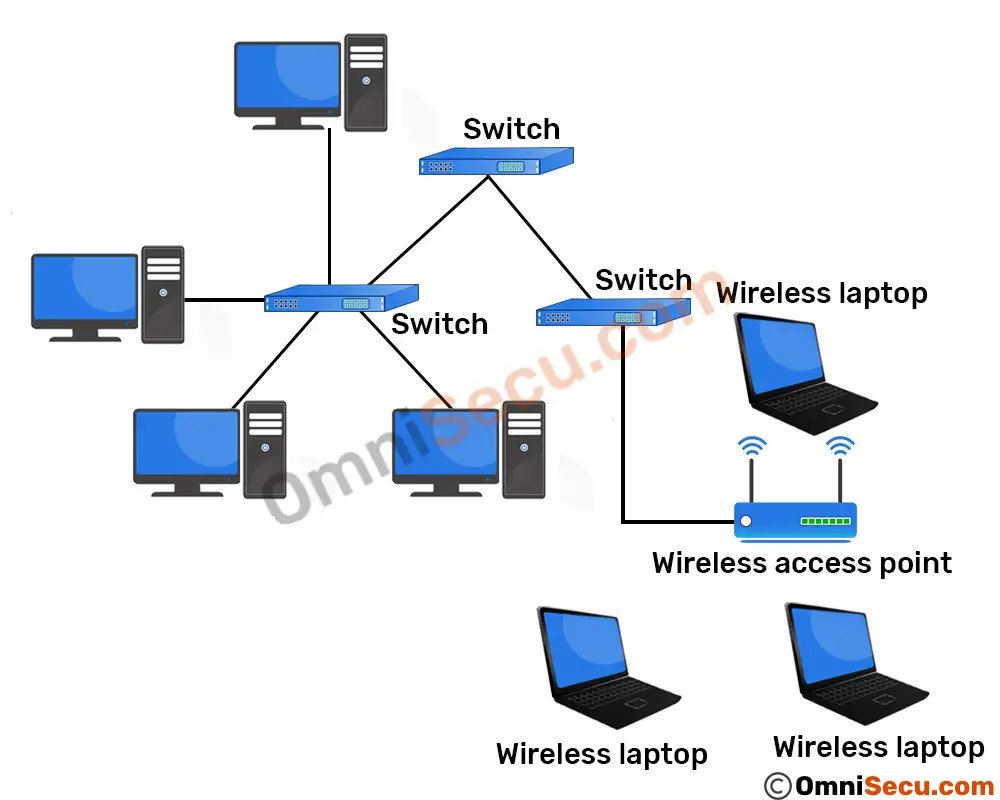Infrastructure Wireless Topology
Another type of wireless topology is the infrastructure wireless topology. Infrastructure wireless topology is used in bigger networks compared with Ad hoc wireless topology. Infrastructure wireless topology is normally used to extend a wired LAN to connect wireless capable devices. A wireless network infrastructure device called wireless Access Point (AP) is used to extend wired LAN to wireless LAN.
Following image shows a simple example infrastructure wireless topology based network.

Wireless Access Point (AP) separates wired LAN and wireless LAN. Wireless Access Point (AP) is connected to the wired LAN. Wireless Access Point (AP) receives data from wired Ethernet LAN, and converts those data into wireless signals. Wireless Access Point (AP) sends and receives those wireless signals and connects wireless clients to the wired Ethernet network.
In infrastructure wireless topology, Access Points (APs) are normally not mobile, but fixed. Access Points (APs) are wired to the wired Ethernet LAN.
Following image shows a Cisco Wireless Access Point (AP).
